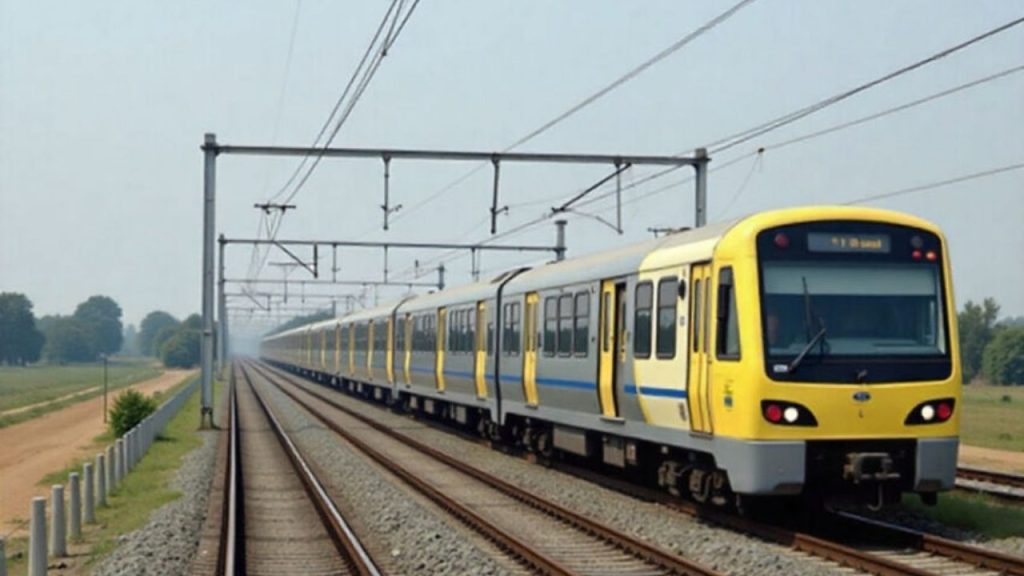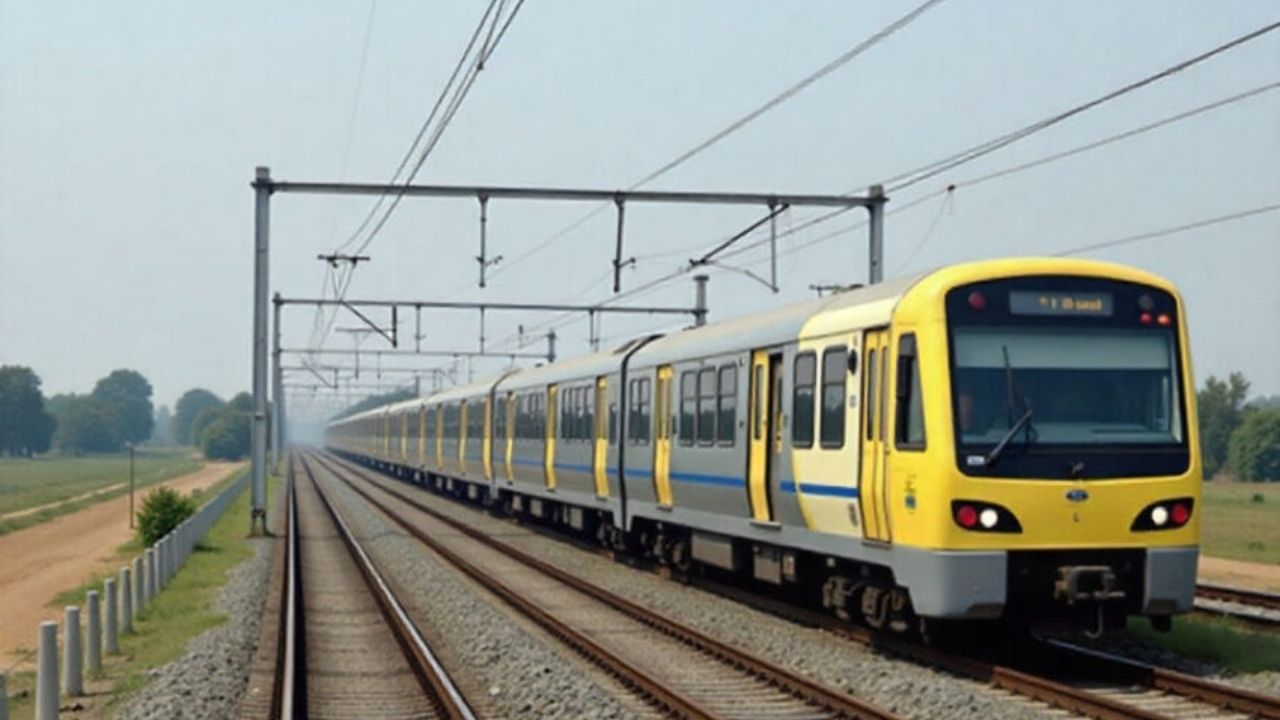If you’ve ever sat in Bhubaneswar traffic, honking your horn and watching the minutes tick by, you know the city needs a real solution to its congestion woes. Enter the Bhubaneswar Metro project—a bold new plan where the Centre and the State of Odisha are finally teaming up to build what many are calling a “game-changer” for the region’s transportation future.

This isn’t just another infrastructure announcement. It’s a signal that India is bringing the metro revolution to Tier-II cities, and Bhubaneswar is at the center of it all. With new feasibility studies, a shift from elevated to underground designs, and the promise of federal funding, the project is shaping up to be far more than just another city rail plan.
Bhubaneswar Set for Metro Revolution
| Aspect | Details |
|---|---|
| Project Name | Bhubaneswar Metro Project |
| Initial Plan | 26 km elevated corridor (Biju Patnaik Airport to Trisulia, Cuttack) |
| Current Focus | Underground metro for reduced traffic disruption |
| Partnership | Odisha Government + Central Government |
| Technical Committee | Experts reworking feasibility, routes, and urban planning |
| Impact | Decongest traffic, boost urban growth, sustainable city planning |
| Reference | Official Odisha Govt Portal |
The Bhubaneswar Metro project is more than a transportation initiative—it’s a turning point for Odisha’s capital. With the Centre and State finally working hand in hand, the city is set to leap into the future of urban mobility. If executed right, this project won’t just cut commute times; it’ll shape how Bhubaneswar grows for the next 50 years.
Why Bhubaneswar Needs a Metro—And Why Now
Let’s be real: Bhubaneswar’s rapid growth has been both a blessing and a curse. According to the Census of India, the city’s population grew by nearly 30% between 2001 and 2011, and projections suggest it will cross 2 million residents in the next decade. That kind of growth, coupled with a boom in IT parks, educational hubs, and urban sprawl, has pushed its roads to the limit.
Unlike cities like New York or Chicago that built subways decades ago, Bhubaneswar is catching up late to the mass rapid transit party. But hey—better late than never. And with federal backing, it could leapfrog directly into a smart, sustainable, and modern transit system that’s more in line with global cities.

From Elevated to Underground: The Big Shift
At first, officials pitched a 26 km elevated corridor linking the airport to Trisulia, Cuttack. On paper, that looked neat. In practice? Not so much. Elevated systems require major land acquisition, disrupt existing traffic during construction, and don’t always integrate well with dense city centers.
That’s why the latest version of the plan is leaning toward an underground metro. Think Boston’s T system or Washington D.C.’s Metro—clean, quiet, and out of the way of street-level chaos. This approach makes sense for Bhubaneswar’s growing but already choked roads. Plus, underground systems last longer and add more value to property development above.
The Role of the Centre–State Collaboration
This is where things get interesting. Earlier, Odisha had planned to fund the project entirely on its own. Admirable? Sure. Practical? Not so much. Without federal assistance, the project faced budget strain, delays, and limited scope.
Now, with the Central Government on board, the project gains:
- Funding stability through shared investment
- Technical expertise from national metro projects like Delhi Metro
- Faster approvals by aligning with Union Ministry of Housing and Urban Affairs
It’s a smart play. Instead of reinventing the wheel, Odisha is pulling in the big guns to get this project moving at the pace it deserves.
Practical Benefits: What Locals Can Expect
So, what’s in it for you if you’re a resident, commuter, or investor in Bhubaneswar? Here’s the breakdown:
1. Less Time in Traffic
Currently, commuters spend an average of 45–60 minutes traveling just 10–12 km during peak hours (source: Urban Transport Report, MoHUA). A metro system could cut that in half.
2. Cleaner Air
With fewer cars and two-wheelers, expect lower emissions. Cities like Delhi and Bengaluru have already seen 15–20% reductions in local traffic emissions after metro adoption.
3. Boost for Business
Areas near metro stations tend to see higher property values and increased retail activity. Just look at how Noida Metro stations transformed local businesses.
4. Job Creation
Metro projects typically create 10,000–15,000 direct and indirect jobs during construction and operation phases (source: DMRC Annual Report).
Step-by-Step: How the Project Will Roll Out
Here’s a simple guide to the roadmap ahead:
- Feasibility Review – The technical committee will finalize whether sections will be underground, elevated, or mixed.
- Funding Approval – Centre and State will hash out cost-sharing models.
- Land & Corridor Planning – Survey work and integration with bus, BRT, and public roads.
- Construction Tendering – Contractors are invited; timelines get locked.
- Phase-I Rollout – Expected to start with the airport–Trisulia corridor, with future expansions to other hubs.
- Public Trials – Before official opening, test runs and safety certifications.
- Operational Launch – Metro opens with phased stations.
How Bhubaneswar Compares to Other Indian Cities
- Delhi Metro: Pioneer and largest in India; carried 6 million riders daily pre-COVID.
- Lucknow Metro: A Tier-II city example that boosted urban mobility.
- Nagpur Metro: Similar scale to Bhubaneswar’s, showing successful integration in a growing city.
Bhubaneswar can learn from these cases, avoiding pitfalls like last-mile connectivity gaps and fare mismanagement.
Professional Insights: What Businesses Should Do
For businesses and investors, here are three practical takeaways:
- Real Estate – Watch for areas near proposed metro stations; values tend to appreciate 10–20%.
- Retail & Hospitality – Position stores, restaurants, or hotels around future metro hubs.
- Workforce Mobility – Companies can cut transport subsidies once employees have a reliable metro option.
Bhubaneswar Metro Project: Odisha Seeks Centre’s Collaboration for Revised Plan
BJD Chief Calls Bhubaneswar Metro Scrapping a Setback for City’s Development
Bhubaneswar Metro Rail Contracts Scrapped Due to Delays; Odisha Government to Revise Plan
FAQs
Q1. When will the Bhubaneswar Metro be operational?
The first phase could realistically open within 5–7 years, depending on approvals and construction speed.
Q2. Will the metro be affordable for daily commuters?
Yes. If modeled after other Tier-II metros, fares may range between ₹15–50 ($0.20–$0.60).
Q3. How many stations are planned?
Early DPRs suggested 20 stations, though the new underground design may adjust that number.
Q4. What about Cuttack—will it be connected?
Yes, the airport–Trisulia line directly links Bhubaneswar to Cuttack, ensuring regional integration.
Q5. How is this different from BRT or other public transport?
Metros offer higher capacity, speed, and reliability. Unlike BRT, they’re not affected by road traffic.





